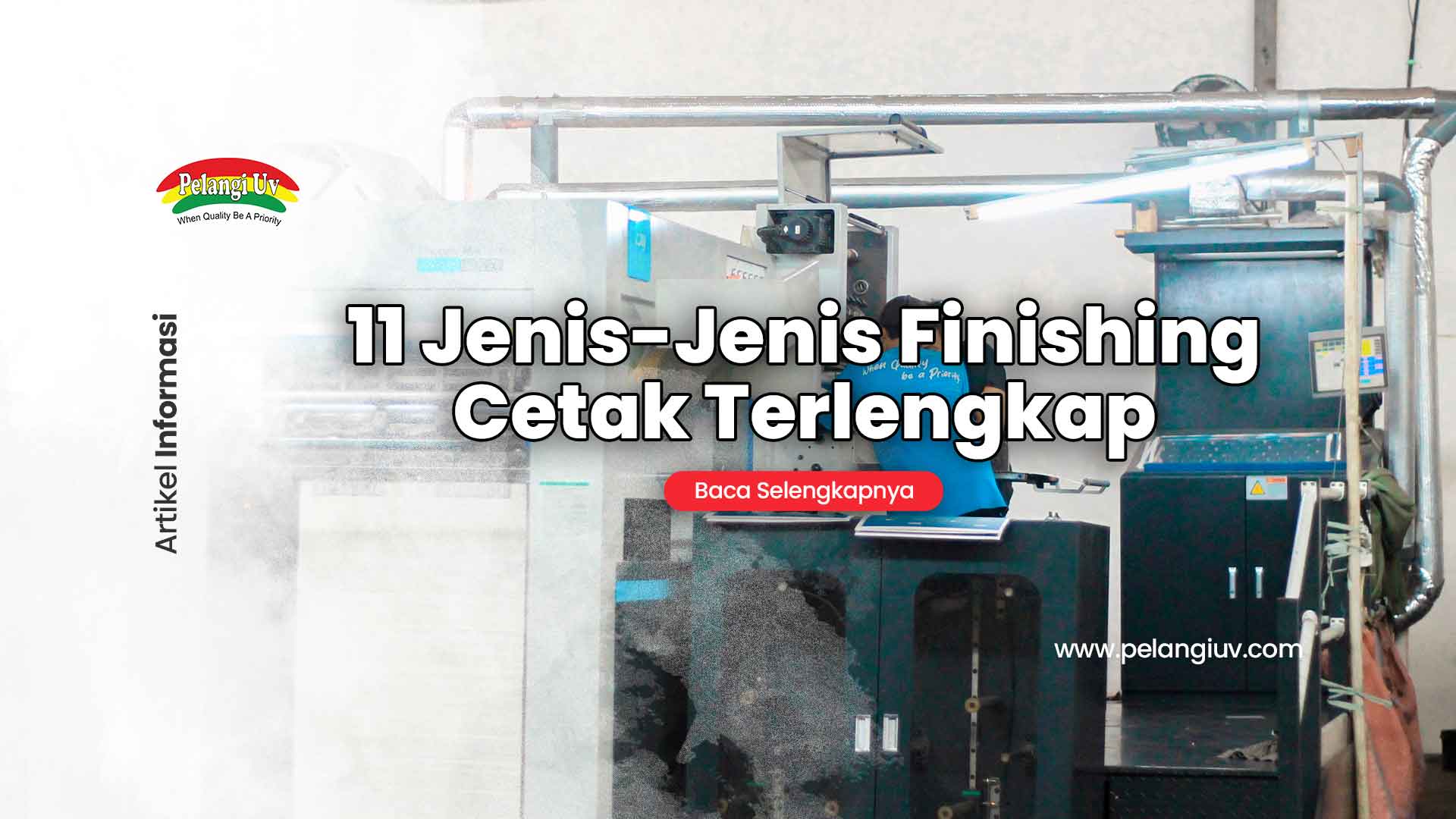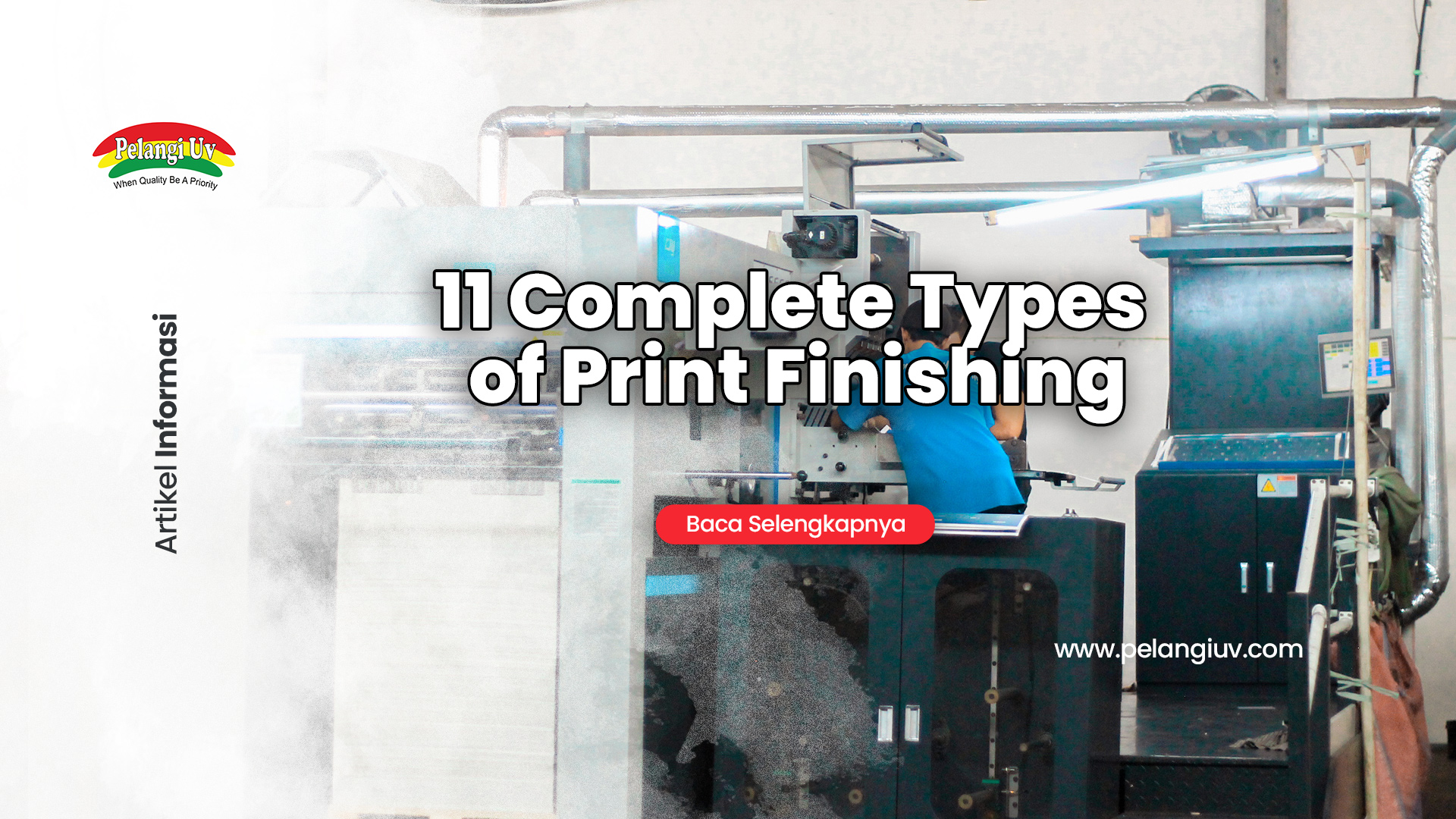11 Types of Printing Finishes
There are various types of printing finishes that are often applied to increase value or increase the functionality of the printed media.
By providing a finishing touch in printing, the value of the printed product will increase. So, how many types of printing finishing are there? Scroll down to find out the complete explanation!
Types of Print Finishing
Types of Printing Finishes The following are several types of printing finishing that you need to know, including:
1. Laminating
Laminating is a printing finishing process that involves coating the surface of the print with a layer of laminated plastic, usually used to protect the print from physical damage and weather. The types of laminated plastic commonly used are Thermal and Waterbased laminated plastic, of which there are 2 types of each plastic, namely Matte and Glossy. You can choose glossy laminated plastic to give a shiny finish, while for a matte finish, use mate laminated plastic. The machines used for lamination are also different, there are manual and automatic lamination machines.
2. Window Laminating
In contrast to Laminating/Lamination, Window Lamination is a lamination process on parts that are not covered to become covered with a transparent appearance so that the inside of the packaging is visible.
3. Hot Stamping
Hot stamping is a finishing process that involves transferring hot foil to the mold surface using high pressure. So the results obtained can provide a metallic or holographic effect that is more attractive and gives a luxurious impression. Various types of hot print foil can be applied for hot Stamping finishing, such as Gold & Silver, Hologram, and other colors. The application of Hot Print Foil is often used to print invitations, cosmetic containers, book covers, greeting cards, etc.
4. Spot UV
Spot UV is the process of applying a UV coating to certain areas of a print that has been custom designed, thereby creating an attractive shimmering effect. It is used to highlight certain parts of the mold design. Spot UV is often applied to brand names in certain design areas to make them look more prominent and exclusive. This can make certain brand names add value to certain products.
5. UV Coating
UV Coating is a process in which a thin layer of UV is applied quickly to the surface of a print to provide additional protection and increase the shine of the print. 6. UV Varnish Varnishing is the process of applying a transparent coating to the surface of a mold to provide additional shine and protection. Various types of varnish can be used, such as glossy varnish, satin varnish, and matte varnish.
7. Embossing and Debossing
Embossing is the process of raising certain parts of the mold to highlight the raised areas according to the design that has been embossed, while debossing is the process of pressing certain areas of the mold according to the design that has been determined. These two processes have the same effect on the mold design. They only differ in the inward and outward pressure for the highlighted finish, giving a more aesthetic and attractive impression.
8. Pond
Pond is the process of cutting a mold with a certain shape using a special knife. Pond machines are also commonly referred to as die-cutting. This process is used to create molds with unique and attractive shapes. The cutting shape is adjusted to customer requests, so the results are more precise. For example, cutting packaging for cosmetic products or certain products
9. Folding and Binding
Folding is the finishing process of folding the print according to the desired design, while binding is the process of binding the print to make a book or magazine. Both are important parts of finishing for more complex molded products.
10. Metalized Transfer
Transfer Metalized is a finishing process in which metalized foil is smeared on the mold surface using high heat and pressure. This creates a shiny metallic effect on the print, giving it a luxurious and attractive appearance. When compared to laminating, this finishing makes the product look much more premium, and suitable for products that prioritize product quality. This process is generally used to print logos, text, or other design elements that you want to highlight in the print.
11. PET Transfer
PET transfer is a foil transfer finishing process using PET (Polyethylene Terephthalate) material which is usually used to print designs on paper or cardboard. This process involves the application of heat and pressure to foil that adheres to the surface of the paper or cardboard, creating the desired shimmering effect or motif. PET transfers are often used in the printing industry to print products such as greeting cards, luxury packaging and other promotional products.
Most Complete Finishing Services in Indonesia
Don’t worry anymore, the product looks ordinary. With finishing services, you can request according to customer requests. Pelangi UV is the only complete finishing service in East Java. The advantages of Pelangi UV are as follows:
- Free pick-up and delivery fees throughout East Java.
- The work is faster and more precise because it is processed using 29 advanced imported machines.
- Processed by professionals who have years of experience in the world of finishing. Hospitally customer service.
- There is product quality control so that all finishing results are guaranteed.
You can request various types of finishing according to customer needs. For complete information regarding finishing services, please contact our Call Center service on 0822 3101 9363 or 0318667469
Closing
Finishing is an equally important part of printing to provide the final touch to the printed media, so that the printed results look more exclusive. Now, you don't worry about finishing your printing/offset services, because Pelangi UV is here to provide the perfect finishing touch service.
What's your comment?
Comments
Lesti Kejora
Thanks for your information.
Tuesday, 3 September 2024 17:20 WIB
